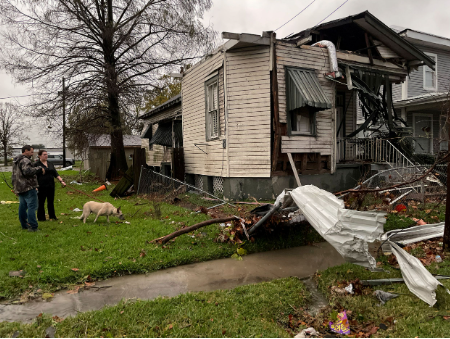Restoring Resilience: Navigating the Aftermath of Storm Damage
Understanding the Devastation of Storm Damage

Storms are awe-inspiring displays of nature’s power, but they also leave behind a wake of destruction that can devastate homes, businesses, and entire communities. From hurricanes to tornadoes, storms can unleash a barrage of wind, rain, hail, and flooding, causing widespread damage to properties of all sizes and types. Understanding the impact of Storm damage is crucial for effectively navigating the recovery process and restoring resilience to affected areas.
Assessing the Extent of the Damage
After a storm has passed, the first step in the recovery process is assessing the extent of the damage. This involves conducting a thorough inspection of the property, both inside and out, to identify areas of concern. Exterior damage may include missing shingles, dented siding, broken windows, and fallen trees, while interior damage could manifest as water stains, mold growth, and structural issues. Documenting the damage with photographs or videos can provide valuable evidence for insurance claims and restoration efforts.
Securing Your Property Against Further Damage
In the immediate aftermath of a storm, it’s essential to take steps to secure your property and prevent further damage. This may involve tarping over damaged roofs, boarding up broken windows, and removing debris from around the property. Securing your property not only helps protect against additional damage but also ensures the safety of occupants and prevents unauthorized access to the site.
Enlisting Professional Assistance
Restoring a property after storm damage requires specialized knowledge, equipment, and expertise. Enlisting the help of a professional restoration company is essential for ensuring that the damage is properly assessed and repaired. A reputable restoration contractor will have experience dealing with storm-related issues and can provide guidance throughout the recovery process. From water extraction and drying to mold remediation and structural repairs, professionals can handle all aspects of the restoration process with efficiency and precision.
The Restoration Process: From Damage to Renewal
The restoration process typically involves several key steps, each aimed at returning the property to its pre-storm condition. Water damage restoration is often one of the first priorities, as excess moisture can lead to mold growth and further structural damage if left unchecked. Once the property has been dried out, structural repairs can begin, including roof replacement, siding repair, and window replacement. Throughout the restoration process, open communication with the restoration team is essential to ensure that your needs are met and that any concerns are addressed promptly.
Navigating Insurance Claims
Filing an insurance claim for storm damage can be a complex and time-consuming process, but it’s an essential step in recovering your losses. Reviewing your insurance policy to understand your coverage limits, deductibles, and exclusions is the first step in navigating the claims process. Documenting the damage thoroughly and providing evidence, such as photographs, receipts, and repair estimates, can help support your claim and expedite the process. Working with a qualified public adjuster can also be beneficial, as they can advocate on your behalf and help ensure that you receive fair compensation for your losses.
Mitigating Future Risks
While it’s impossible to prevent storms from occurring, there are steps you can take to mitigate the risk of future damage to your property. Investing in storm-resistant materials and reinforcements, such as impact-resistant windows and reinforced garage doors, can help bolster your property’s resilience against extreme weather events. Regular maintenance, such as inspecting your roof, cleaning gutters, and trimming trees, can also help prevent damage from high winds and heavy rain. Additionally, purchasing flood insurance if you live in a flood-prone area can provide added protection against water damage.
Building Back Stronger
Storm damage can be a devastating experience, but with the right knowledge, resources, and support, recovery is possible. By understanding the impact of storm damage, assessing the extent of the damage, enlisting professional assistance, and navigating the insurance claims process, you can restore your property and rebuild your life. By taking steps to mitigate future risks and prioritize resilience, you can emerge from the aftermath of a storm stronger and more prepared to face whatever challenges may come your way. Click here



